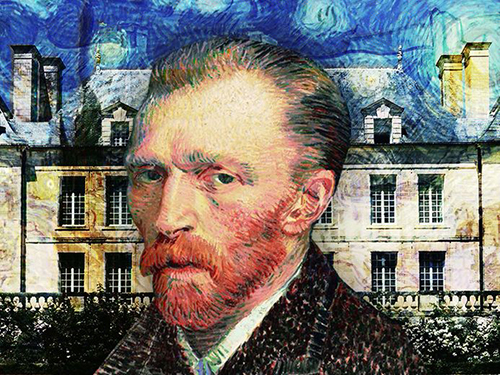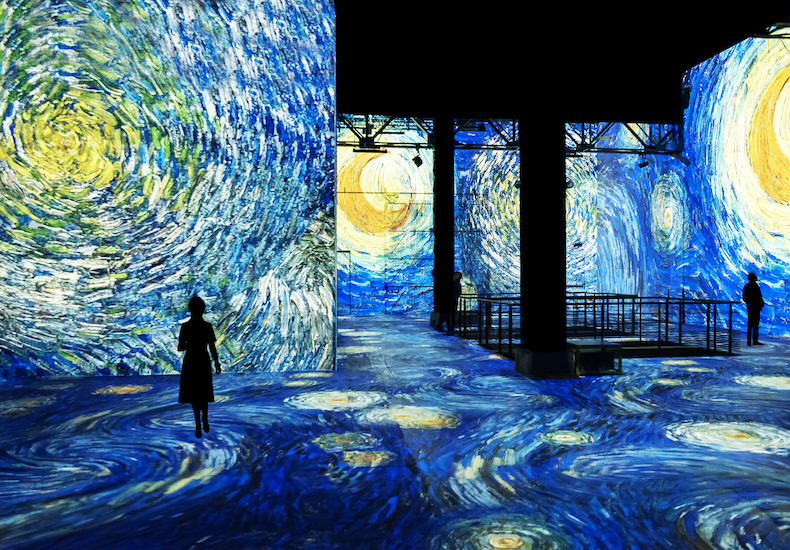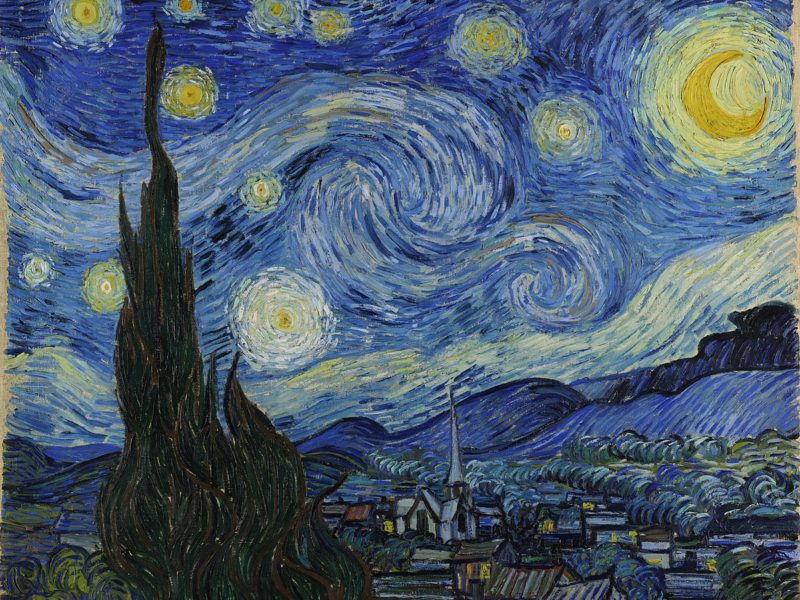
18 Nov Vincent Van Gogh and His Love For Painting The Stars
“This morning I saw the countryside from my window a long time before sunrise, with nothing but the morning star, which looked very big,” wrote van Gogh to his brother Theo, describing his inspiration for one of his best-known paintings, The Starry Night (1889). The window to which he refers was in the Saint-Paul asylum in Saint-Rémy, in southern France, where he sought respite from his emotional suffering while continuing to make art….

It’s not hard to see why Vincent van Gogh’s Starry Night is art history’s most famous celestial scene—and one of the world’s most beloved paintings to boot (the phenomenon of the immersive Van Gogh Art experience and Paint & Sip nights seems to prove people want not just to look at it, but feel the experience and to be inside it, too).
Widely termed as Van Gogh’s magnum opus, this night star’s painting depicts the view outside his sanatorium room window at night, but actually, it was painted from a memory during the day. While perhaps this is a less romantic vision, Van Gogh indeed had a separate painting studio at the Saint-Paule-de-Mausole, where he worked during the day.

Van gogh may have been considered as lonely and tortured, but he was anything but disconnected from contemporary conversations about the latest developments in the arts. His discursive letters to his friends Paul Gaugin and Émile Bernard discussed the latest color theories, including the principles of color contrasts that Van Gogh derived from his hero, the Neoclassical artist Eugène Delacroix.
Van Gogh made The Starry Night at Saint-Paul-de-Mausole asylum in Saint-Rémy, in southern France, where he had voluntarily admitted himself following a manic episode in which he infamously mutilated his own ear. Many have interpreted the painting as Van Gogh’s contemplation of his own mortality—the cypress tree was a common death symbol, and the artist often affiliated the stars with the afterlife. In one letter to his brother Theo, he wrote, “But the sight of the stars always makes me dream… Why, I say to myself, should the spots of light in the firmament be less accessible to us than the black spots on the map of France? Just as we take the train to go to Tarascon or Rouen, we take death to go to a star.”

But while the artist’s masterpiece certainly lends itself to emotive interpretations, it was also highly considered one of his most productive career periods. The Saint-Paul-de-Mausole asylum was a progressive institution in which patients were encouraged to spend time in nature, and the artist’s brother ensured his brother was given a studio and ample time to paint. There, in the shrouded safety of the asylum, Van Gogh experienced some of his most brilliant—and peaceful—moments. He painted his famous Irises within his first several days there, and he would go on to paint The Starry Night over just a few days in June of 1889. In fact, when Van Gogh painted Cafe Terrace, the stars were his inspiration for a ‘paint night’ like setting with dreamy stars.
Did you know that one meaning that Starry Night is supposed to hold was biblical, where the eleven stars were seen as a reference to Joseph. With a possible reference to Genesis 37:9, Van Gogh hoped that he would gain acceptance from his peers as an artist—similar to how Joseph did after a hard life. Beautiful, isn’t it?

For Van Gogh, color was a vehicle for expressing emotion, and the vibrantly hued canvases of his late career succeed in large part to the availability of new hues in the paint market. It is the intensity of light in those colors on the canvas that gives The Starry Night its unique glow. The contrasts between dashes of paint create an optical effect known as luminance, in which the brain experiences simultaneous sensory responses. Simply put—one part of the brain focuses on light and motion, but sees color less distinctly. Another part of the brain, however, will grasp each of the contrasting colors. Van Gogh’s bold, light-filled brushstrokes provide both of these experiences, creating the flickering sense for which the painting is so famous.
With so many extraordinary meanings behind Van Goghs famous pieces, it only encourages one to paint their own version of his stunning masterpieces, to pay a tribute to his legacy. With our beginner painting Van Gogh ‘paint by number kits’, it is possible for anyone to create an easy canvas painting that represents their memory of Van Gogh, as he will always have a special place in all of our hearts.


